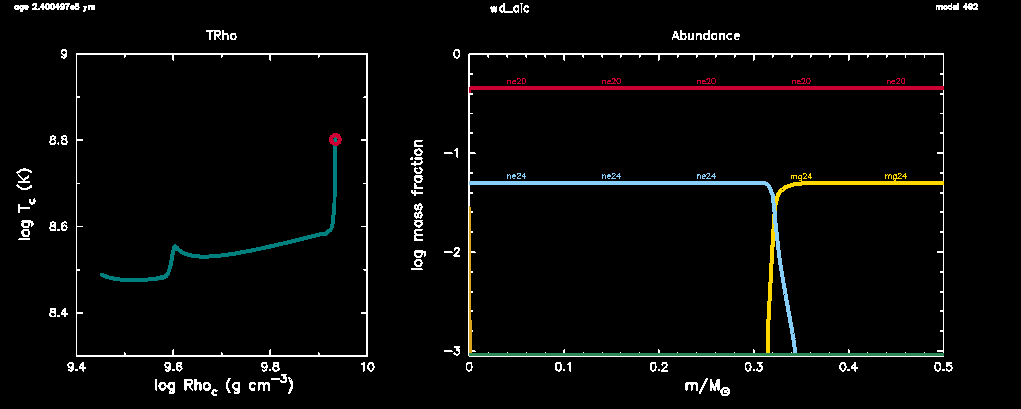wd_aic
This test case evolves an accreting ONeMg WD up to the point of thermal runaway in the core (see Schwab et al. 2015).
It exercises the special weak rate implementation detailed in that paper and in Section 8 of MESA III. These capabilities are activated via the options:
use_special_weak_rates = .true.
special_weak_states_file = 'aic.states'
special_weak_transitions_file = 'aic.transitions'
ion_coulomb_corrections = 'PCR2009'
electron_coulomb_corrections = 'Itoh2002'
This computes the key reaction rates (electron capture on 24Mg and
20Ne) on-the-fly from nuclear data specified in the indicated input
files. This is significantly more costly than using tabulated rates,
so in many applications tabulated rates for these reactions should be
preferred (see use_suzuki_weak_rates). However, these on-the-fly
rates are more accurate at low temperatures (below 1e8 K) and allow
explicit updating of nuclear physics.
The density-driven weak reactions that occur in this example mean that the composition (and electron fraction) deep in the degenerate WD interior change. It is critical that composition changes be included in the energy equation via:
include_composition_in_eps_grav = .true.
Similarly, it is critical to use the Ledoux criterion:
use_Ledoux_criterion = .true.
so that the stabilizing effects of the composition gradient is included.
The test succeeds if the 20Ne electron captures cause a temperature spike at the center of the model.

Last-Updated: 2020-10-30 (mesa r14735) by Josiah Schwab